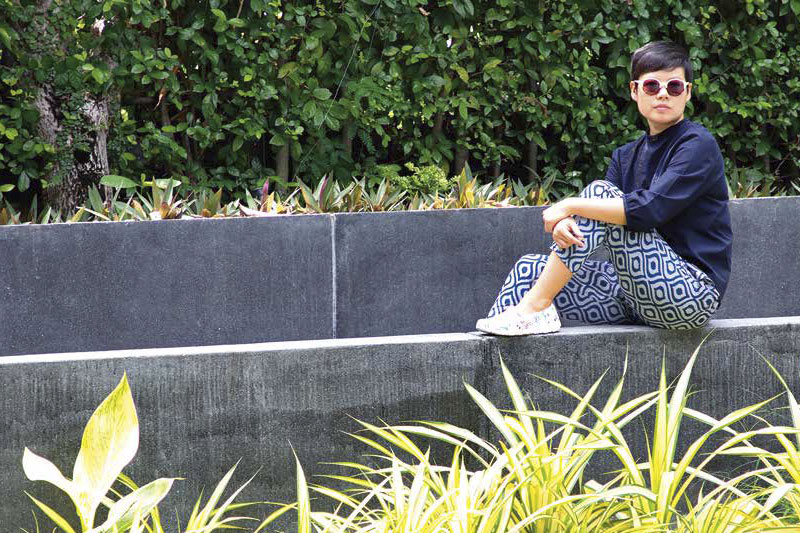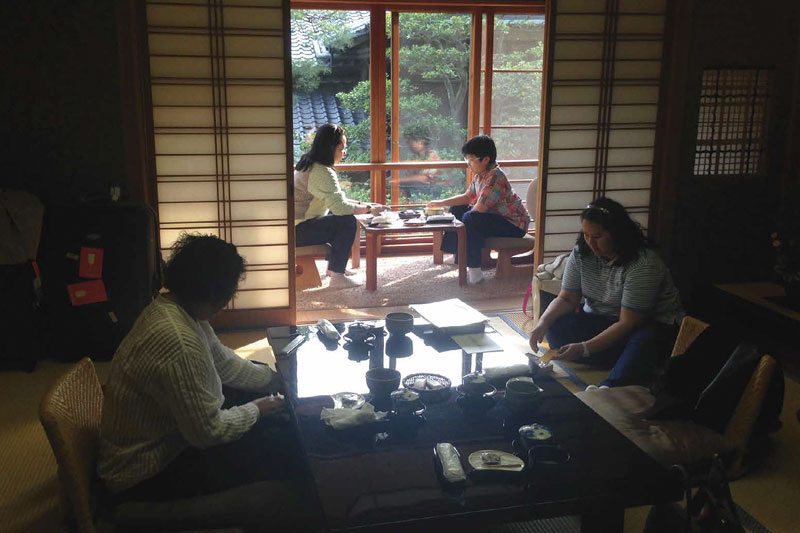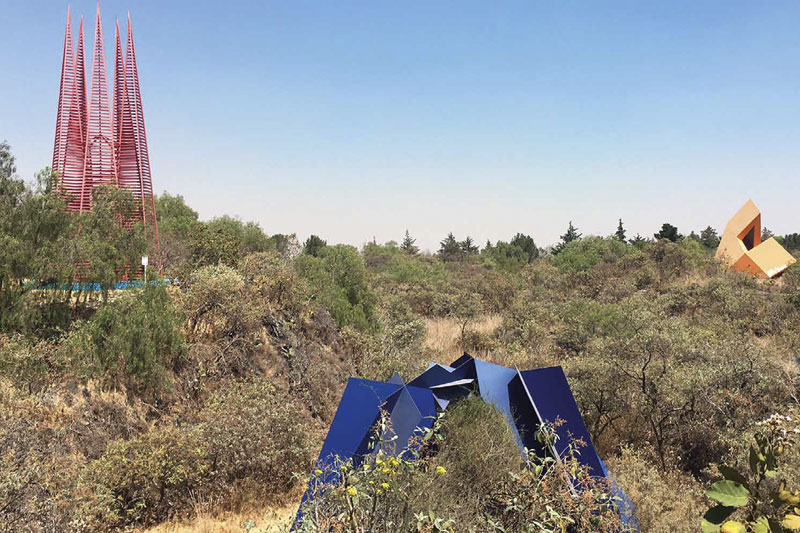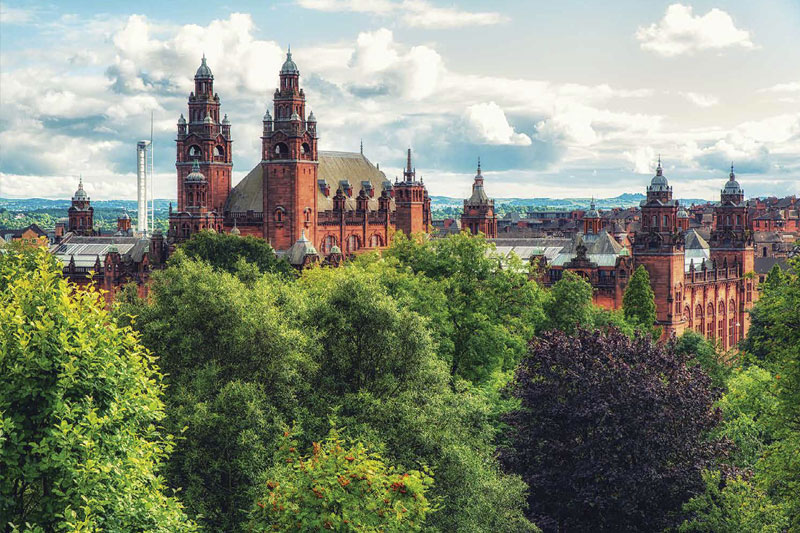
Constant Journey into Film
With the success of her movies, filmmaker Anocha Suwichakornpong explains how personal travel largely defines and blends seamlessly into her film settings.
Words: Srinit Suwannasak
Photos: Wichit Kongsiangsung
Although Anocha Suwichakornpong does not consider herself an experienced traveller, traces of her journeys have influenced her personality and her works, often in unconscious ways. The up-and-coming, award-winning Thai film maker says her cinematic portrayal of Thailand incorporates the many voices and perspectives she gained while studying and travelling in Europe, America, and Asia.
Anocha started her journey with her shot film Graceland (2006), the first Thai film selected for Cinéfondation, Cannes Film Festival. Her first feature-length film The Mundane History (2009) premiered at Busan International Festival, subsequently winning the Tiger Award at the International Film Festival Rotterdam (2010). And her latest work, By the Time it Gets Dark, has gained international recognition after its premiere at the Locarno Festival.
Anocha’s stories of journeys are not only about going from one film festival to another, but it’s about gaining different voices at several stages in her life – from her hometown, Chon Buri, to Eastbourne, Dorking, London, New York, and Bangkok.
“Travelling works on me in the way that forces me to see different perspectives because it makes me meet a lot of different people. It helps unlock us from being trapped in certain norms and values. For example, we might have believed that Thai rice is the best in the world but when I met a friend from Ecuador, she told me that Thai rice is ‘good.’ Actually in Ecuador, they eat a different kind of rice and Thai rice is not preferable. Chilli varieties that we think only exists in Thailand can be found in other countries too. These seemingly small things taught me about differences and not to be a nationalist,” Anocha explained.

Such perspectives led to images of Thailand in Anocha’s films portrayed with different voices. “The subject of my films is Thailand,” Anocha explained on why she left New York after graduating from Columbia University. “As big cities, New York and Bangkok have something in common, but at the same time they’re very different. In New York, you can do anything and nobody cares, while Bangkok people seem to be interested in other people. But I chose Bangkok because the stories I want to tell are here.”
Back in the early 90s, Anocha travelled alone for the first time to Eastbourne, a small town in the UK. “I’m not sure if it can be called travelling alone because it’s with a group of Thai students who went for summer school. Anyway, it’s the first time that I didn’t travel with my family,” Anocha recalled. However, this trip seemed to be just a prelude of her journey. A big change came to the 8th grade girl was when her parents sent her to a boarding school in Dorking. “It’s a countryside that’s very quiet. There’s nothing there except a small shop that is also a post office. If we want something we have to go to this shop, but if we want more we had to go to London. Luckily, it’s not far.”
Despite living in a small town like Dorking, it’s the starting point of her Europe exploration when she went backpacking with her two older sisters. “It’s before the EU, so it’s not as easy as these days. And because we were still very young, so we had to be very careful about budget and be very selective about the things we did. I think this is the big difference of travelling when you were young and when you are a grownup. Travelling when you were young is more like an adventure. We took the train and stayed in the youth hostels which we’ve never experienced before. One night we stayed in a youth hostel in Paris that had four beds. While the three of us were sleeping, a person came in the middle of the night for the bed.” I was quite surprised because I thought that the whole room was ours.”
Although Anocha spent many years of her life in Europe and America, there are many places in Asia that Anocha describes as “her place”.
“I’ve just gone to Krabi recently. I prefer Krabi to Phuket as it’s not so busy and better for chilling. And my favourite thing to do in Krabi isto kayak. There is a cave where we have to kayak to see. It’s kinda fun.” While Krabi is the destination for her favourite activity like kayaking, a quiet place like Pua district in Nan province is her sanctuary, and which became the main location of her latest film By the Time It Gets Dark. “The owner of the place came from Bangkok to create a mushroom farm with a house (in the film) as a homestay. There is a coffee shop downstairs. When I first wrote the script for this film, the setting is on an island, it’s just my imagined island. But when I went there, I decided to change it. I was impressed by its landscape, the light, the colour of the place. The scenery of each season is different: it’s very green during the rainy season and its colour changes again in the winter. And during the day, we can walk into the forest.”
After shooting the film, the farm’s owner moved to live there permanently but Anocha still keeps that place in her mind and went back to Nan from time to time. “I want to screen my film in Nan one day. It’s a lovely and quiet small town where you can see people riding a bicycle. And there are many nice shops, restaurants and museums. A dessert shop called “Pa Nim” (Auntie Nim) is one of my favourites.”
In addition to searching locations for her own films, Anocha tries to experience places in classic films. She went to Hiroshima to find the place where director Alain Resnais shot Hiroshima, Mon Amour. “I tried to find the hotel that was in the film. I asked so many people but still couldn’t find it. I heard that it was changed to a convention centre. And in the film H Story which is an homage to Hiroshima, Mon Amour, there is a scene where Béatrice Dalle walks in an arcade. I tried to find that too and I found a long arcade. I’m not sure if it’s the same one as in the film. While I was walking there, it was after a baseball match. So, there were baseball fans all over the place, which was an impressive scene.”

Anocha found that Taiwan is the country that speaks to her and mirrors her own personality. “People there are not too flashy or attention-grabbing. I like the people, the town, the mountains. The last time I went there, I drove to a mountain which is about 3,000 metres and passed through some 10 tunnels. It’s the first time that I drove there. Before that I took the train and I think that the public transport system in Taipei is good and it’s cheaper than in Bangkok. And most of the museums are free. I went to an art exhibition
where the entry fee costs only 50 Taiwanese dollars. It’s very cheap for a good show. And there is a bookstore that opens 24 hours. The food is also good.” For Anocha, Taiwan was not love at first sight, but in subsequent trips she fell further for the country. “The first time I went there was for the film festival. So, I just went to a night market and didn’t see much of the town. But the second time, I went there with my family. We went to filmmaker Tsai Ming-Liang’s café that my mum likes but she didn’t have any idea about Tsai Ming-Liang. She just liked the place. But now it’s already closed.”
With many different scenes from the different locations of her life, Anocha found herself to be an observer at the edge of everywhere. “I think that I can blend in everywhere I live but at the same time, I don’t have any sense of belonging anywhere. I never thought about living anywhere for the long term. Travelling affects me in the sense that I won’t stay at the same place. So, in my work, I won’t repeat myself. It’s really important to keep challenging myself and do something I’ve never done before. It’s a kind of adventure. This is the reason why By the Time It Gets Dark is much different from Mundane History.”

อโนชา สุวิชากรพงศ์ เข้าสู่เส้นทางสายภาพยนตร์ Graceland (2006) หนังสั้นสัญชาติไทยเรื่องแรกที่ได้รับคัดเลือกให้ฉายใน Cinéfondation เทศกาลภาพยนตร์ เมืองคานส์ และภาพยนตร์เรื่องแรกของเธอ The Mundane History (2009) ก็ได้รับเลือกให้ฉายในเทศกาลภาพยนตร์นานาชาติเมืองปูซาน แต่การเดินทางของเธอไม่ได้เกี่ยวเนื่องกับภาพยนตร์เท่านั้น เธอยังเดินทางไปทั่วโลก จากชลบุรีบ้านเกิดของเธอ ไปยังอีสต์บอร์น ดอร์กกิ้ง ลอนดอน นิวยอร์ก และกรุงเทพฯ
ประสบการณ์จากการเดินทางของอโนชาสะท้อนผ่านบุคลิกและงานของเธออย่างเห็นได้ชัด เธอเล่าว่าการท่องเที่ยวเปิดมุมมองใหม่ เพราะได้เจอผู้คนหลากหลาย ปลดโซ่ตรวนที่ล่ามเราไว้กับขนบและค่านิยมบางอย่าง เช่น เราเชื่อว่าข้าวไทยคือที่สุดของที่สุด แต่คนเอกวาดอร์กลับชื่นชอบข้าวชนิดอื่นมากกว่าข้าวไทยสิ่งเล็กๆ อย่างนี้แหละที่ทำให้ความเป็นชาตินิยมของเธอลดลงไป
ภาพความเป็นไทยของอโนชาสะท้อนผ่านหลากหลายเสียงในภาพยนตร์ของเธอ เธอตัดสินใจย้ายออกจากกรุงนิวยอร์กหลังจบการศึกษาจากมหาวิทยาลัยโคลัมเบียแล้วกลับมาอยู่ที่กรุงเทพเพราะเรื่องราวที่อโนชาต้องการจะเล่าในภาพยนตร์ของเธออยู่ที่นี่ ในทรรศนะของเธอนิวยอร์กกับกรุงเทพเป็นเมืองหลวงเหมือนกันก็จริงแต่ก็แตกต่างกันมาก ไม่มีคนสนใจว่าคุณทำอะไรที่นิวยอร์ก แต่ถ้าเป็นกรุงเทพ นั่นคนละเรื่อง
ช่วงปี พ.ศ. 2542 อโนชาออกเดินทางโดยที่ไม่ได้ไปกับครอบครัวเป็นครั้งแรก เธอไปที่เมืองอีสต์บอร์น สหราชอาณาจักร จากนั้นครอบครัวของเธอก็ส่งเธอไปเรียนโรงเรียนประจำในเมืองดอร์กกิ้ง เมืองแสนสงบที่แทบไม่มีอะไรเลย ดีหน่อยที่อยู่ไม่ไกลจากลอนดอนนัก
แม้ว่าจะอยู่ในเมืองเล็กๆ แต่นี่คือจุดเริ่มต้นของการแบกเป้ท่องเที่ยวทั่วยุโรปของอโนชากับพี่สาวอีกสองคน การท่องเที่ยวสำหรับช่วงชีวิตที่เพิ่งแย้มบานเปรียบเสมือนการผจญภัยเป็นประสบการณ์ใหม่ที่ไม่เคยพบเจอที่ไหนมาก่อน
แต่ถึงอย่างไร เอเชียก็ยังเป็นบ้านของเธอเสมอ เธอชอบกระบี่มากกว่าภูเก็ตเพราะสงบกว่า หรือจะเป็นอำเภอปัว จังหวัดน่านที่เป็นสถานที่ถ่ายทำหลักของภาพยนตร์เรื่อง By the Time It Gets Dark เธอเล่าอีกว่าเจ้าของบ้านมาจากกรุงเทพเพื่อทำฟาร์มเห็ด ตอนแรกเธอสร้างฉากหลักเป็นเกาะในจินตนาการของเธอ แต่พอได้มาเห็นอำเภอปัว ได้พบเห็นภูมิประเทศที่แตกต่างกันไปตามฤดูกาล ความคิดนั้นก็เปลี่ยนไปทันที่ หลังจากที่ถ่ายภาพยนตร์เสร็จ เธอฝันว่าอยากจะฉายภาพยนตร์เรื่องนี้ที่จังหวัดน่านสักครั้งให้ได้
อโนชาหลงใหลในสถานที่ถ่ายหนังมาก เธอถึงขั้นตามหาโรงแรมที่เป็นสถานที่ถ่ายทำเรื่อง Hiroshima, Mon Amour แต่ก็ต้องผิดหวังเมื่อได้ยินมาว่าโรงแรมนั้นเปลี่ยนเป็นสถานที่จัดประชุมไปเสียแล้ว หรือจะเป็นอาร์เคดในภาพยนตร์เรื่อง H Story ที่สร้างขึ้นเพื่ออุทิศแด่ Hiroshima, Mon Amour เธอเจอสถานที่ที่คล้ายกัน แต่ไม่มั่นใจว่าใช่หรือเปล่า
จากการเดินทางไปรอบโลก อโนชาพบว่าไต้หวันเป็นประเทศที่ตอบโจทย์และสะท้อนความเป็นตัวเธอได้ดีที่สุด เธอคิดว่าผู้คนที่นี่ไม่หวือหวาวุ่นวายมากนัก มีภูเขาสวยงามจนเธอถึงกับเคยได้ขับรถไต่เขาสูงกว่า 3,000 เมตร ลอดอุโมงค์กว่า 10 แห่ง นอกจากนี้การขนส่งสาธารณะที่ไทเปยังดีกว่าและถูกกว่าที่กรุงเทพมาก พิพิธภัณฑ์ส่วนใหญ่ไม่เก็บค่าเข้าชม มีร้านหนังสือที่เปิด 24 ชั่วโมง อาหารก็อร่อย ไต้หวันทำให้อโนชาตกหลุมรักมากขึ้นทุกครั้งที่เธอไปเยือน
ในหลายฉากหลายตอนที่แตกต่างกันไปตามแต่ละช่วงชีวิตของอโนชา เธอได้ค้นพบว่าตัวเองคือผู้สังเกตการณ์ในทุกที่ที่เธอไป เธอเข้ากับสถานที่ที่เธอใช้ชีวิตได้ดี แต่เธอไม่ได้รู้สึกว่าตัวเองเป็นเจ้าของที่แห่งนั้น ไม่เคยคิดว่าต้องอยู่ระยะยาว ไม่ยึดติดอยู่ที่เดิมๆ ไม่ต่างจากงานของเธอที่จะไม่ทำอะไรซ้ำๆ เพื่อท้าทายตัวเองอยู่เสมอ นี่เองเป็นเหตุผลที่ By the Time It Gets Dark และ Mundane History แตกต่างกันอย่างสิ้นเชิง
